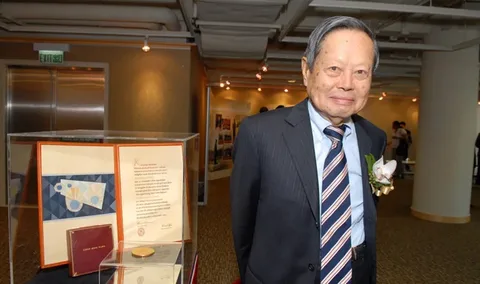Introduction
Yang Zhenning, also known as Chen-Ning Yang, is one of the most influential theoretical physicists of the twentieth century. His groundbreaking work in particle physics and statistical mechanics reshaped modern science. He is best known for his collaboration with Tsung-Dao Lee, which led to the discovery of parity violation in weak interactions, a finding that earned them the Nobel Prize in Physics in 1957. Yang’s contributions have left a permanent mark on both Western and Chinese scientific communities.
Early Life and Education
Yang Zhenning was born on September 22, 1922, in Hefei, Anhui Province, China. His father, Yang Ko-Chuen, was a professor of mathematics, which gave Yang an early exposure to academic life. During his childhood, China was undergoing political turmoil, but Yang’s family valued education and science, encouraging him to pursue academic excellence.
He attended the National Southwestern Associated University during the Second Sino-Japanese War, where he completed his bachelor’s degree in physics in 1942. Later, he earned his master’s degree from Tsinghua University in 1944. His dedication and talent led him to the United States, where he pursued doctoral studies at the University of Chicago under the supervision of Enrico Fermi. Yang’s Ph.D. research in statistical mechanics and theoretical physics laid the foundation for his later discoveries.
Scientific Contributions and Nobel Prize
After earning his doctorate in 1948, Yang began working at the Institute for Advanced Study in Princeton, where he collaborated with many of the brightest minds in physics. It was during this time that he teamed up with Tsung-Dao Lee to investigate one of the most fundamental assumptions in physics — the conservation of parity.
Before their work, it was widely believed that the laws of physics were symmetrical and that parity was conserved in all interactions. Yang and Lee challenged this assumption by proposing that in weak nuclear interactions, parity might not be conserved. Their theory was soon confirmed by experimental physicist Chien-Shiung Wu, who demonstrated parity violation in beta decay. This discovery revolutionized the understanding of particle physics and opened new doors to the study of weak interactions.
For this remarkable work, Yang and Lee were awarded the Nobel Prize in Physics in 1957, becoming the first Chinese scientists to receive the prestigious honor. Their achievement not only changed the field of physics but also inspired generations of Chinese scholars to pursue scientific research at the highest level.
Later Research and Theoretical Innovations
Beyond parity violation, Yang made numerous other important contributions to theoretical physics. He developed the Yang-Mills theory with Robert Mills in 1954, which introduced a new framework for understanding fundamental forces. The Yang-Mills theory later became the foundation for the Standard Model of particle physics, which describes the electromagnetic, weak, and strong interactions of elementary particles.
His work on gauge theories and symmetry principles continues to influence modern theoretical physics, including quantum field theory and string theory. Yang also made valuable contributions to statistical mechanics and condensed matter physics, demonstrating his broad intellectual range.
Return to China and Academic Influence
After spending decades in the United States, Yang Zhenning returned to China in the early 2000s and became a professor at Tsinghua University. His decision to return home was seen as a significant event in the Chinese academic world, symbolizing a bridge between Western and Chinese science.
Yang devoted himself to promoting scientific education and research in China. He encouraged collaboration between Chinese and international scientists, emphasizing the importance of open exchange and innovation. His influence has inspired many young researchers to pursue careers in physics and other scientific disciplines.
Philosophy and Legacy
Yang Zhenning’s approach to science has always combined deep theoretical understanding with philosophical reflection. He often spoke about the beauty and unity of nature, seeing physics as not only a technical discipline but also an artistic pursuit of truth. His humility and curiosity have made him a respected figure not only as a scientist but also as a thinker.
Throughout his long career, Yang received numerous awards and honors, including membership in several international academies of science. His works have become essential references in the study of modern physics. Even today, Yang continues to be admired for his lifelong dedication to discovery and education.
Conclusion
Yang Zhenning stands as one of the great pioneers of modern physics. From his early studies in China to his groundbreaking discoveries in the United States, his journey reflects the power of curiosity, persistence, and intellectual courage. His discovery of parity violation and the development of the Yang-Mills theory reshaped scientific understanding of the universe. Beyond his research, Yang’s commitment to education and international cooperation has built a lasting legacy that continues to inspire new generations of scientists around the world.













Comments are closed